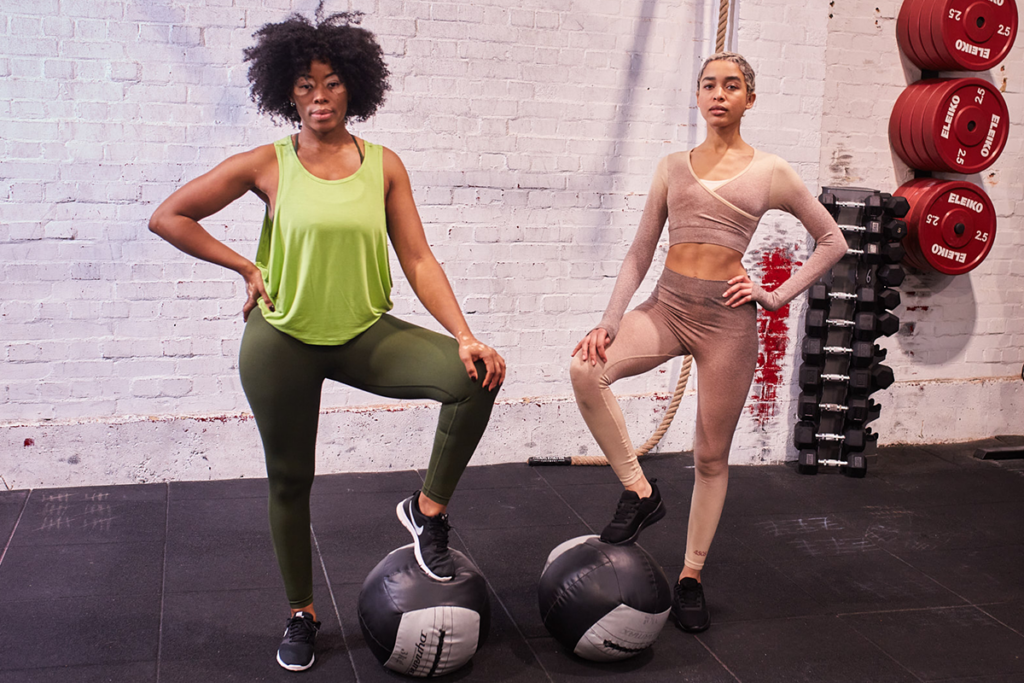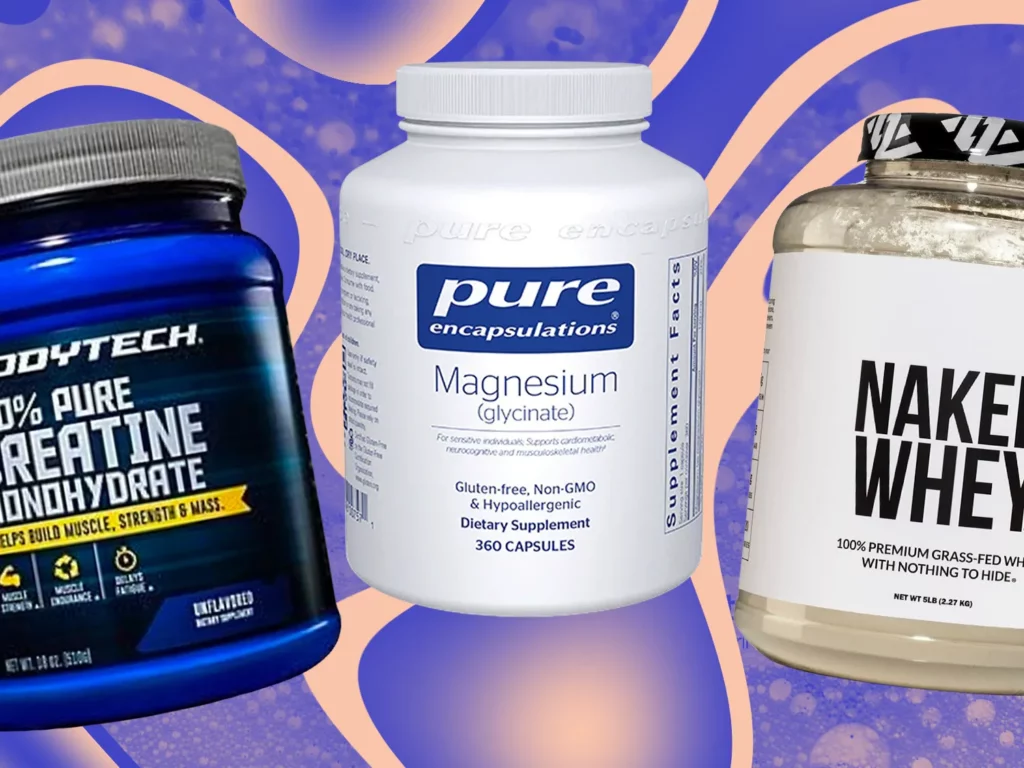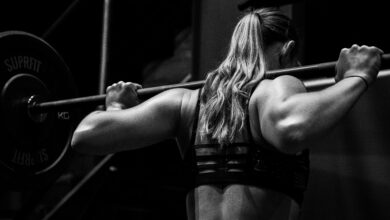
After a grueling workout session, your body deserves some TLC to help it recover and repair. In this article, we will explore the world of post-workout recovery, focusing on essential stretches and nutrition tips to aid in your body’s rejuvenation process. From loosening up those tight muscles to fueling your body with the right nutrients, we’ve got you covered. So, grab a towel, put on your favorite yoga pants, and let’s embark on a journey to maximize your post-workout recovery.
Stretches for Post-Workout Recovery
Understanding the Importance of Stretching
Stretching is a crucial component of post-workout recovery. It helps to improve flexibility, increase range of motion, reduce muscle soreness, and prevent injuries. When you exercise, your muscles can become tight and shortened. Stretching after a workout helps to lengthen and relax these muscles, promoting overall recovery. By incorporating stretching into your post-workout routine, you can enhance your performance in future workouts and maintain a healthy, functional body.
Dynamic Stretches
Dynamic stretches involve controlled movements that mimic the exercises performed during your workout. These stretches are performed through a full range of motion and help to warm up the muscles, increase blood flow, and improve the elasticity of the muscles and tendons. Dynamic stretches are particularly effective for activities that involve explosive movements, such as running, jumping, or lifting weights. Incorporating dynamic stretches into your post-workout routine can help prevent muscle imbalances and enhance your athletic performance.
Static Stretches
Static stretches involve holding a stretch position for an extended period, typically 20-30 seconds. These stretches are effective in improving overall flexibility and increasing the range of motion in the muscles and joints. Static stretches should be performed after your workout when your muscles are warm and relaxed. By holding each stretch, you allow the muscle to gradually release tension and improve its elasticity. Static stretches are particularly beneficial for activities that require flexibility and can help reduce the risk of muscle strains and other injuries.

Foam Rolling
Foam rolling, also known as self-myofascial release, is a technique that uses a foam roller to apply pressure on specific areas of the body. This technique helps to release tension and tightness in the muscles and fascia, which is the connective tissue surrounding the muscles. Foam rolling can improve muscle recovery by increasing blood flow, reducing muscle soreness, and breaking up adhesions or knots in the muscles. By incorporating foam rolling into your post-workout routine, you can enhance muscle recovery and maintain optimal muscle function.
Yoga for Recovery
Yoga is a holistic practice that combines physical poses, breathing techniques, and meditation. It offers numerous benefits for post-workout recovery, including improved flexibility, increased range of motion, reduced muscle soreness, and enhanced relaxation. Yoga poses often target specific muscle groups, releasing tension and tightness while promoting relaxation and rejuvenation. By incorporating yoga into your post-workout routine, you can improve your body’s recovery process and promote overall physical and mental well-being.

Nutrition Tips for Post-Workout Recovery
Importance of Proper Nutrition
Proper nutrition is essential for post-workout recovery. After a workout, your body needs nutrients to replenish energy stores, repair damaged tissues, and support muscle growth. Consuming the right balance of macronutrients (carbohydrates, proteins, and fats) and micronutrients (vitamins and minerals) is crucial for optimizing recovery and maximizing your fitness gains.
Hydration
Hydration plays a vital role in post-workout recovery. During exercise, you lose fluids through sweat, and it is essential to replenish these fluids to maintain proper hydration levels. Dehydration can impair performance, hinder muscle recovery, and increase the risk of injury. To optimize post-workout recovery, aim to drink enough water to replace the fluids lost during exercise and maintain a steady level of hydration throughout the day. You can also include electrolyte-rich beverages or foods to replenish electrolytes lost through sweat.

Protein Intake
Protein is a key nutrient for post-workout recovery. It provides the building blocks necessary for muscle repair and growth. Consuming an adequate amount of protein after your workout helps to promote muscle protein synthesis, reduce muscle breakdown, and enhance recovery. Good sources of protein include lean meats, poultry, fish, dairy products, legumes, and plant-based protein powders. Aim to consume around 20-30 grams of protein within an hour after your workout to optimize muscle recovery and adaptation.
Carbohydrates for Energy
Carbohydrates are the primary source of energy for your muscles during exercise. After a workout, your glycogen stores become depleted, and consuming carbohydrates helps to replenish these energy stores. Carbohydrates also stimulate the release of insulin, which promotes the uptake of amino acids (building blocks of protein) into the muscle cells. Including a combination of complex carbohydrates (whole grains, fruits, and vegetables) and simple carbohydrates (sports drinks, fruits) in your post-workout meal or snack can provide the necessary energy for recovery and support muscle glycogen replenishment.
Healthy Fats
Including healthy fats in your post-workout meal or snack is important for overall recovery. Fats are essential for the absorption of fat-soluble vitamins, provide a concentrated source of energy, and help regulate inflammation in the body. Good sources of healthy fats include avocados, nuts, seeds, olive oil, and fatty fish like salmon. Incorporating these fats into your post-workout nutrition can support muscle recovery and provide long-lasting energy.

Vitamins and Minerals
Consuming a variety of fruits, vegetables, and whole foods after a workout ensures an adequate intake of essential vitamins and minerals. These nutrients are vital for overall health and play a role in various processes, including muscle repair, immune function, and energy production. A well-balanced diet rich in colorful fruits and vegetables, whole grains, lean proteins, and healthy fats will provide a wide range of micronutrients necessary for post-workout recovery.
Timing of Post-Workout Nutrition
The timing of post-workout nutrition plays a crucial role in recovery. Consuming a balanced meal or snack within 30-60 minutes after your workout can help kickstart the recovery process. During this time, your muscles are primed to absorb nutrients and facilitate muscle repair and growth. Aim to include a combination of carbohydrates and protein in your post-workout meal or snack to optimize recovery and replenish energy stores.
Supplements for Recovery
Supplements can be a useful addition to your post-workout recovery routine, but they should not replace a well-balanced diet. If you choose to use supplements, it’s important to choose products that are safe, effective, and tailored to your specific needs. Common supplements used for recovery include protein powders, branched-chain amino acids (BCAAs), creatine, and glutamine. However, it’s always recommended to consult with a healthcare professional or registered dietitian before incorporating supplements into your routine.
Understanding the Importance of Stretching
Benefits of Stretching
Stretching offers numerous benefits for post-workout recovery. It helps to improve flexibility, which is the ability of your joints to move through a full range of motion. Increased flexibility enhances athletic performance, reduces the risk of injuries, and improves posture. Stretching also improves blood circulation to the muscles, delivering oxygen and nutrients necessary for recovery. Additionally, stretching can help reduce muscle soreness and stiffness, promoting muscle relaxation and overall well-being.
Increased Flexibility
Regular stretching can significantly improve flexibility over time. As your muscles become more flexible, they can move through a greater range of motion without causing strain or injury. Increased flexibility allows for better performance in various activities, such as sports, weightlifting, and yoga. It also promotes proper joint alignment, reducing the risk of imbalances and overuse injuries.

Improved Range of Motion
Stretching helps to improve your range of motion, which is the distance an individual joint can move. By increasing your range of motion, you can perform exercises and movements more effectively and efficiently. Whether you’re a professional athlete or a casual gym-goer, having a good range of motion allows you to maximize your physical potential and prevent injuries.
Reduced Muscle Soreness
Engaging in intense physical activity can lead to muscle soreness, commonly known as delayed onset muscle soreness (DOMS). Stretching after a workout helps to alleviate muscle soreness by increasing blood flow, promoting the removal of waste products, and reducing muscle tension. By incorporating stretching into your post-workout routine, you can minimize the discomfort associated with muscle soreness and enhance your recovery process.
Injury Prevention
Stretching plays a crucial role in injury prevention. Tight muscles can increase the risk of muscle strains, pulls, and other soft tissue injuries. By regularly stretching your muscles, you can improve their flexibility and reduce the risk of overstretching or tearing. Stretching also helps to maintain optimal joint alignment, preventing imbalances that may lead to chronic injuries over time. By including stretching in your post-workout routine, you can enhance your body’s resilience and reduce the likelihood of exercise-induced injuries.
Dynamic Stretches
Definition and Benefits
Dynamic stretches are a form of stretching that involves continuous movement through a full range of motion. Unlike static stretches where you hold a position, dynamic stretches activate the muscles and increase blood flow, preparing the body for physical activity. Dynamic stretches are often used as part of a warm-up routine before exercise due to their ability to improve muscle function and prevent injuries.
Examples of Dynamic Stretches
There are numerous dynamic stretches that can be incorporated into your post-workout routine. Some examples include:
- Leg Swings: Stand sideways next to a stable object and swing one leg forward and backward, keeping it straight. Repeat for 10-15 swings on each leg.
- Arm Circles: Stand with your feet shoulder-width apart and extend your arms out to the sides. Make small circles with your arms, gradually increasing the size of the circles. Repeat for 10-15 circles in each direction.
- Walking Lunges: Take a step forward with your right foot and lower your body into a lunge position. Push off your right foot and bring your left foot forward into the next lunge. Repeat for 10-15 lunges on each leg.
- High Knees: Stand with your feet hip-width apart and lift one knee towards your chest, while simultaneously hopping on the other leg. Alternate knees in a running motion, aiming to bring your knees as high as possible. Repeat for 10-15 high knees on each leg.

How to Incorporate Dynamic Stretches into a Routine
To incorporate dynamic stretches into your post-workout routine, start by performing a brief warm-up to increase your body temperature and prepare your muscles for movement. Then, choose a few dynamic stretches that target the muscle groups used during your workout. Perform each dynamic stretch for 10-15 repetitions or as instructed, and focus on maintaining good form and control throughout the movement. Dynamic stretches should be performed in a smooth, controlled manner, avoiding any jerking or bouncing motions. By incorporating dynamic stretches into your post-workout routine, you can enhance your warm-up, improve muscle function, and reduce the risk of injury.
Static Stretches
Definition and Benefits
Static stretches involve holding a stretch position for an extended period, typically 20-30 seconds. Unlike dynamic stretches, static stretches are performed with minimal movement, allowing the muscles to elongate and relax. Static stretches help to improve overall flexibility, increase joint range of motion, and promote muscle relaxation. These stretches are typically performed after a workout when the muscles are warm and pliable, allowing for a deeper and more effective stretch.
Examples of Static Stretches
There are various static stretches that can be included in your post-workout routine. Some examples include:
- Standing Quadriceps Stretch: Stand tall and lift your right foot towards your glutes, grabbing your ankle or foot with your right hand. Hold the position for 20-30 seconds and repeat on the other side.
- Seated Forward Fold: Sit on the floor with your legs extended in front of you. Slowly hinge forward at the hips, reaching towards your toes. Hold the stretch for 20-30 seconds, focusing on keeping your back straight and feeling the stretch in your hamstrings.
- Child’s Pose: Kneel on the floor and sit back on your heels. Extend your arms forward and lower your torso towards the floor, resting your forehead on the mat. Hold the position for 20-30 seconds, feeling the stretch in your back and hips.
- Standing Chest Stretch: Interlace your fingers behind your back and straighten your arms. Gently lift your arms away from your body, feeling the stretch in your chest and shoulders. Hold the stretch for 20-30 seconds, focusing on keeping your spine straight.
Proper Technique for Static Stretching
To perform static stretches effectively, follow these guidelines:
- Warm up your muscles before attempting static stretches. This can be done through light aerobic exercise or dynamic stretching.
- Choose specific stretches that target the muscle groups you worked during your workout.
- Hold each stretch for 20-30 seconds without bouncing or jerking. You should feel a gentle stretch, but it should not be painful.
- Breathe deeply and relax into each stretch, allowing the muscle to gradually release tension.
- Focus on maintaining good posture and alignment during each stretch. Avoid rounding your back or straining your neck.
- If you feel any sharp pain or discomfort, release the stretch immediately.
By following these proper stretching techniques, you can optimize the benefits of static stretching and enhance your post-workout recovery process.
Foam Rolling
Benefits of Foam Rolling
Foam rolling, also known as self-myofascial release, is a technique that uses a foam roller to apply pressure on specific areas of the body. Foam rolling offers numerous benefits for post-workout recovery, including:
- Increased blood flow: Foam rolling helps to increase blood circulation to the muscles, promoting the delivery of oxygen and nutrients necessary for recovery.
- Decreased muscle tension: By targeting trigger points or knots in the muscles, foam rolling can help release tightness and reduce muscle tension.
- Improved range of motion: Foam rolling helps to break up adhesions or knots in the muscle fibers and fascia, allowing for better mobility and range of motion.
- Faster muscle recovery: Foam rolling aids in flushing out metabolic waste products and reducing inflammation in the muscles, promoting a faster recovery process.

Techniques for Foam Rolling
To perform foam rolling effectively, follow these techniques:
- Choose a foam roller with the appropriate density for your needs. Beginners may start with a softer foam roller, while athletes or individuals accustomed to foam rolling may opt for a firmer roller.
- Position yourself on the foam roller, targeting the desired muscle group. Apply pressure on the muscle by using your body weight and roll back and forth along the length of the muscle.
- If you encounter a tender or tight spot, pause and hold the pressure on that area for 20-30 seconds until you feel a release.
- Continue rolling along the muscle group, focusing on areas of tension or tightness.
- Remember to breathe deeply and relax into the foam roller, allowing the muscles to gradually release tension.
Best Practices for Foam Rolling
When incorporating foam rolling into your post-workout routine, consider these best practices:
- Foam roll after your workout when your muscles are warm and pliable.
- Start with shorter rolling sessions and gradually increase the duration and intensity as your body adapts.
- Focus on each muscle group for 1-2 minutes, applying enough pressure to feel the stretch and release without causing discomfort or pain.
- Do not rush through the foam rolling session. Take your time and listen to your body’s response to each movement.
- Foam roll consistently to maintain the benefits. Aim for 2-3 foam rolling sessions per week or as needed.
By following these techniques and best practices, you can maximize the benefits of foam rolling and aid in your post-workout recovery process.
Yoga for Recovery
Benefits of Yoga for Recovery
Yoga is a holistic practice that combines physical poses (asanas), breathing techniques (pranayama), and meditation. It offers numerous benefits for post-workout recovery, including:
- Improved flexibility and range of motion: Yoga poses involve stretching and lengthening the muscles, improving flexibility and increasing joint range of motion.
- Enhanced relaxation and stress reduction: Yoga incorporates deep breathing and mindfulness techniques, promoting relaxation and reducing stress levels.
- Increased body awareness and mindfulness: Yoga helps to cultivate body awareness and promote mindfulness, allowing you to better understand and listen to your body’s needs.
- Improved muscle recovery and reduced soreness: Yoga poses help to increase blood flow and oxygenation to the muscles, promoting faster recovery and reducing muscle soreness.
- Balanced muscle development: Yoga poses target various muscle groups, promoting balanced muscle development and reducing the risk of imbalances and injuries.
Specific Yoga Poses for Post-Workout
Certain yoga poses can be particularly beneficial for post-workout recovery. Some poses to consider include:
- Downward-Facing Dog: This pose stretches the hamstrings, calves, and shoulders, while also lengthening the spine and opening the chest.
- Child’s Pose: Child’s Pose is a relaxing and restorative pose that stretches the lower back, hips, and thighs, promoting relaxation and releasing tension.
- Standing Forward Fold: This pose stretches the hamstrings and calves while also relaxing the spine and relieving tension in the upper body.
- Pigeon Pose: Pigeon Pose targets the hip flexors, glutes, and piriformis, promoting deep hip opening and releasing tightness in the hips.
- Legs-Up-The-Wall Pose: This restorative pose helps to improve circulation and reduce muscle fatigue by allowing blood and lymph fluid to flow back to the heart.

Yoga
Incorporating Yoga into a Routine
To incorporate yoga into your post-workout routine, consider the following tips:
- Start with shorter yoga sessions and gradually increase the duration and intensity as your body becomes more accustomed to the practice.
- Choose yoga poses that target the muscles worked during your workout and focus on deepening the stretches gradually.
- Practice yoga in a quiet, calm environment to promote relaxation and mindfulness.
- Listen to your body and modify poses or use props as needed to avoid strain or discomfort.
- Incorporate yoga into your routine on scheduled rest days or as a separate workout session to fully experience its benefits for recovery.
By incorporating yoga into your post-workout routine, you can enhance your body’s recovery process, promote relaxation, and improve overall physical and mental well-being.
Importance of Proper Nutrition
Fueling the Body for Recovery
Proper nutrition is essential for post-workout recovery as it provides the necessary nutrients to fuel the body’s recovery process. After a workout, your muscles undergo damage and depletion of energy stores. Consuming the right balance of macronutrients (carbohydrates, proteins, and fats) and micronutrients (vitamins and minerals) helps to replenish energy stores, repair damaged tissues, and support muscle growth. Proper nutrition also plays a role in reducing inflammation, promoting immune function, and maintaining overall health and well-being.
Proper Macronutrient Intake
Macronutrients are the three main nutrients required in larger quantities in the diet: carbohydrates, proteins, and fats. Each macronutrient plays a specific role in post-workout recovery:
- Carbohydrates: Carbohydrates are the body’s primary source of energy. Consuming carbohydrates after a workout helps to replenish glycogen stores (stored carbohydrates) within the muscles, providing the energy necessary for recovery and future physical activity. Good sources of carbohydrates include whole grains, fruits, vegetables, and legumes.
- Proteins: Proteins are the building blocks of muscle tissues. Consuming an adequate amount of protein after a workout helps to promote muscle protein synthesis (muscle repair and growth) and reduce muscle breakdown. Good sources of protein include lean meats, poultry, fish, dairy products, legumes, and plant-based protein powders.
- Fats: Fats provide a concentrated source of energy and play a role in various physiological processes. Including healthy fats in your post-workout nutrition helps to regulate inflammation, support hormone production, and aid in nutrient absorption. Good sources of healthy fats include avocados, nuts, seeds, olive oil, and fatty fish.
Balancing your macronutrient intake is essential for providing your body with the necessary nutrients to support post-workout recovery and overall health.
Micronutrients for Recovery
Micronutrients, including vitamins and minerals, are essential for various physiological processes in the body. Consuming a well-balanced diet rich in fruits, vegetables, and whole foods ensures an adequate intake of essential micronutrients for optimal recovery. Some key micronutrients for post-workout recovery include:
- Vitamin C: Vitamin C is a powerful antioxidant that helps to reduce exercise-induced oxidative stress and support immune function. Good sources of vitamin C include citrus fruits, berries, spinach, and bell peppers.
- Vitamin E: Vitamin E is another antioxidant that plays a role in reducing inflammation and protecting cells from oxidative damage. Good sources of vitamin E include almonds, sunflower seeds, and spinach.
- Magnesium: Magnesium is involved in over 300 biochemical reactions in the body, including muscle contraction and relaxation. Consuming foods rich in magnesium, such as leafy greens, nuts, seeds, and whole grains, can help support muscle recovery and reduce muscle cramping.
- Iron: Iron is necessary for the production of hemoglobin, which carries oxygen to the muscles. Consuming iron-rich foods, such as lean meats, poultry, fish, beans, and fortified cereals, helps to maintain optimal oxygen delivery and muscle function.
A well-balanced diet that includes a variety of fruits, vegetables, whole grains, lean proteins, and healthy fats will provide a wide range of micronutrients necessary for post-workout recovery and overall health.
Balanced and Nutrient-Dense Meals
To optimize post-workout recovery, aim to consume balanced and nutrient-dense meals that include a combination of macronutrients and micronutrients. Some examples of post-workout meals could include:
- Grilled chicken breast with roasted sweet potatoes and steamed broccoli: This meal provides a balance of lean protein (chicken breast), complex carbohydrates (sweet potatoes), and fiber-rich vegetables (broccoli). It also offers a good mix of vitamins, minerals, and antioxidants.
- Greek yogurt with mixed berries and a sprinkle of nuts: Greek yogurt is rich in protein and calcium, while mixed berries provide a variety of vitamins and antioxidants. Adding a sprinkle of nuts (such as almonds or walnuts) provides healthy fats and additional protein.
- Quinoa salad with grilled salmon and a side of sautéed vegetables: Quinoa is a complete source of protein, offering all essential amino acids necessary for muscle recovery. Grilled salmon adds additional protein and healthy fats, while sautéed vegetables provide fiber, vitamins, and minerals.
- Whole grain toast with avocado, eggs, and a side of fruit: Whole grain toast offers complex carbohydrates for energy, while avocado provides healthy fats. Adding eggs adds high-quality protein, and a side of fruit provides essential vitamins and antioxidants.
By focusing on balanced and nutrient-dense meals, you can ensure that your body is properly fueled for recovery and equipped with the necessary nutrients to optimize post-workout performance.

Hydration
Hydration and Exercise Performance
Hydration plays a critical role in exercise performance and post-workout recovery. During exercise, your body loses fluids through sweat, and it is essential to replenish these fluids to maintain proper hydration levels. Dehydration can impair performance, hinder muscle recovery, and increase the risk of heat-related illnesses. Proper hydration supports physiological functions, such as nutrient transport, waste removal, and temperature regulation. By maintaining proper hydration, you can optimize your performance, enhance recovery, and prevent dehydration-related complications.
Replenishing Fluids Post-Workout
After a workout, it is important to replenish the fluids lost through sweat to restore hydration levels. The amount of fluid needed varies depending on factors such as exercise intensity, duration, and environmental conditions. As a general guideline, aim to drink at least 16-20 fluid ounces (about 500-600 milliliters) of water or electrolyte-rich beverages within two hours after your workout. You can also monitor your hydration status by checking the color of your urine. Light yellow or clear urine indicates adequate hydration, while dark yellow or amber urine suggests dehydration.
Electrolyte Balance
Electrolytes are minerals that help maintain proper fluid balance, muscle function, and nerve transmission in the body. During exercise, electrolytes are lost through sweat, and it is important to replenish them to support post-workout recovery. Common electrolytes include sodium, potassium, magnesium, and calcium. Including electrolyte-rich beverages, such as sports drinks or coconut water, can help replenish electrolytes lost during exercise. Additionally, consuming foods high in electrolytes, such as bananas, oranges, leafy greens, and yogurt, can further support electrolyte balance and overall hydration.
Proper hydration is crucial for post-workout recovery. By replenishing fluids and maintaining electrolyte balance, you can support optimal muscle function, enhance recovery, and promote overall well-being.
Supplements for Recovery
Choosing the Right Supplements
While a well-balanced diet should provide all the necessary nutrients for post-workout recovery, supplements can be a useful addition for specific needs or convenience. It is important to choose supplements that are safe, effective, and tailored to your goals. When considering supplements for recovery, keep the following in mind:
- Quality: Choose reputable brands that undergo third-party testing to ensure product quality and purity.
- Ingredients: Read labels carefully and look for supplements that contain high-quality ingredients without unnecessary additives or fillers.
- Individual needs: Consider your specific needs and goals when choosing supplements. Consulting with a healthcare professional or registered dietitian can help determine which supplements may be beneficial for you.
- Dosing and timing: Follow recommended dosages and timing instructions provided by the manufacturer or a healthcare professional.
Remember, supplements should complement a well-balanced diet and should not replace whole foods. They should be used as an addition to support your nutrition goals and post-workout recovery. Always consult with a healthcare professional or registered dietitian before incorporating supplements into your routine to ensure they are appropriate for you.
Protein Powders
Protein powders are a popular supplement for post-workout recovery as they provide a convenient and easily digestible source of protein. They can be particularly beneficial for individuals who have increased protein needs or find it challenging to consume enough protein through whole foods alone. Protein powders come in different forms, including whey (derived from dairy), casein (slowly digested protein), and plant-based options (pea, rice, or hemp protein). When choosing a protein powder, consider factors such as personal dietary preferences, potential allergies or intolerances, and individual protein requirements.

Branched-Chain Amino Acids (BCAAs)
BCAAs are a group of essential amino acids, including leucine, isoleucine, and valine. They are commonly used as a supplement for post-workout recovery due to their role in protein synthesis and the prevention of muscle breakdown. BCAAs are particularly beneficial for individuals engaged in intense exercise or endurance activities. They are available in supplement form or can be found naturally in protein-rich foods like meat, fish, dairy products, and plant-based protein sources.
Creatine
Creatine is a naturally occurring compound that helps to regenerate adenosine triphosphate (ATP), the primary source of energy for muscle contractions. Supplementation with creatine has been shown to enhance muscle strength, power, and overall exercise performance. It is commonly used by athletes or individuals engaging in high-intensity or resistance training. Creatine is available in various forms, including creatine monohydrate, and should be consumed according to recommended dosages and guidelines.
Glutamine
Glutamine is an amino acid that plays a role in various physiological processes, including immune function and muscle recovery. It is naturally synthesized in the body, but during periods of intense exercise or stress, glutamine stores can become depleted. Supplementing with glutamine may help support muscle recovery, reduce muscle soreness, and boost immune function. Glutamine supplements are available in powder or capsule form.
Remember, supplements should be used as a complement to a well-balanced diet and should not replace whole foods. Consult with a healthcare professional or registered dietitian before incorporating supplements into your routine to ensure they are appropriate for your needs.
In summary, post-workout recovery is a crucial aspect of any fitness routine. By incorporating stretches into your routine, you can optimize flexibility, range of motion, and injury prevention. Proper nutrition, including an emphasis on macronutrient balance, hydration, and adequate intake of micronutrients, supports muscle recovery and overall health. Utilizing techniques like foam rolling and incorporating yoga can further enhance your recovery process by targeting muscle tension, improving blood flow, and promoting relaxation.
Additionally, selecting the appropriate supplements, such as protein powders or BCAAs, can provide added support for muscle repair and growth. By understanding the importance of post-workout recovery and implementing these strategies, you can optimize your fitness gains, enhance performance, and maintain a healthy, balanced lifestyle.




